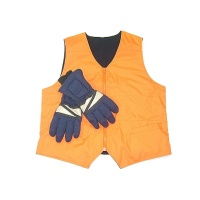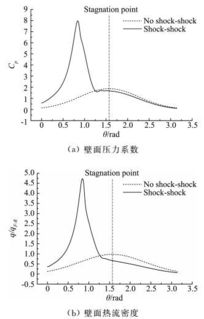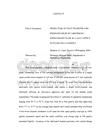Textile Heat Stability and Pressure-Resistance Testing:A Comprehensive Guide
This comprehensive guide on textile heat stability and pressure-resistance testing offers a detailed overview of the necessary steps and equipment required for conducting these tests. The guide covers both manual and automated methods, including temperature cycling, water absorption, and tensile strength testing. Additionally, it provides information on how to interpret test results and what factors can impact the outcome of these tests. By following this guide, researchers and industry professionals can ensure that their textiles meet the necessary standards for heat resistance and pressure resistance, protecting against wear and tear over time.
In the world of textiles, ensuring the durability and quality of products is crucial for manufacturers to maintain consumer trust and satisfaction. One critical aspect of this durability is heat stability and pressure resistance, which are tested under specific conditions to determine how well a fabric can withstand high temperatures and mechanical stress without deteriorating or losing its shape. This article aims to provide an in-depth understanding of these tests, including their methods, significance, and practical applications.
Heat Stability Testing
Heat stability testing is essential for textiles used in outdoor applications like clothing, bedding, and carpets. These materials need to withstand extreme temperatures without losing their shape or color, which can be achieved through various methods such as oven testing, steam testing, and autoclave testing.

Oven Testing
Oven testing involves exposing samples to high temperatures for a specified period. The temperature ranges typically used depend on the type of fabric and the intended application. For instance, cotton fabrics may be tested at 204°C (400°F) for up to 60 minutes, while polyester fabrics might be tested at 230°C (450°F) for 90 minutes. The goal is to ensure that the fabric does not lose its shape or undergo significant shrinkage during this process.
Steam Testing
Steam testing simulates the effects of prolonged exposure to high humidity environments, which are common in many outdoor settings. The test involves placing samples in a sealed container filled with boiling water, allowing them to soak for a set period. This method is particularly effective for determining the moisture absorption and permeability of fabrics.
Autoclave Testing
Autoclave testing is a more rigorous method used for high-performance textiles, especially those designed for industrial use. It involves subjecting samples to high pressure and temperature conditions for extended periods, typically ranging from 121°C (250°F) to 171°C (340°F) for several hours to days. This approach helps evaluate the fabric's resistance to chemical degradation, shrinkage, and changes in physical properties.
Pressure-Resistance Testing
Pressure-resistance testing is another critical aspect of textile quality control. It involves applying controlled pressure to the fabric surface to determine how well it resists deformation under load. This includes tests such as compression strength testing, tear strength testing, and burst strength testing.
Compression Strength Testing
Compression strength testing measures the maximum force required to compress a sample of fabric to a specified thickness. This test is often performed using a tensile tester, where the sample is subjected to a constant force until it breaks. The resulting force is then converted into a compression strength value, which indicates the fabric's ability to withstand repeated compression without breaking.
Tear Strength Testing
Tear strength testing evaluates the fabric's ability to resist tearing when subjected to a defined force. This test is commonly performed using a tearometer, which applies a controlled force to the fabric and measures the distance traveled by the tear. The resulting distance is then compared to a standardized tear path to determine the tear strength value.
Burst Strength Testing
Burst strength testing assesses the fabric's ability to withstand sudden pressure changes, which can occur during transportation or handling. In this test, the fabric is subjected to a sudden increase in pressure, causing it to burst or rupture. The resulting force is measured and compared to a standardized burst strength value to determine the fabric's resilience to external pressure.
Practical Applications

The results of these tests play a crucial role in the design and development of textile products. For example, if a fabric fails one of these tests, it may need to be redesigned or modified to improve its performance. Additionally, these tests help manufacturers identify potential issues early in the production process, enabling them to address them before shipping out products to customers.
Moreover, understanding the impact of heat and pressure on textiles is important for industries like apparel, footwear, and outdoor furniture manufacturing. By conducting regular heat stability and pressure-resistance tests, companies can ensure that their products meet stringent safety and performance standards, thereby protecting consumers and promoting long-term brand reputation.
Conclusion
Textiles are complex materials that require careful consideration of their heat stability and pressure-resistance properties. Through comprehensive testing methods such as oven, steam, autoclave, compression, tear, and burst strength testing, manufacturers can gain valuable insights into the performance of their products under various conditions. By incorporating these tests into their product development processes, they can create textiles that are not only durable but also reliable and safe for end users.
在纺织品生产过程中,耐热压牢度是一个重要的质量指标,它关系到纺织品在使用过程中能否承受高温环境,保持其原有的形状和性能,本报告将详细介绍纺织品耐热压牢度测试的方法、过程及案例分析。
测试方法与流程
测试方法
纺织品耐热压牢度测试主要采用高温压牢力测试仪进行,该测试仪能够模拟高温环境,对纺织品进行压力测试,以检测其耐热性能。
(1)样品准备:选择符合要求的纺织品样品,确保样品尺寸、材质和工艺符合测试要求。
(2)测试条件:设定高温压牢力测试仪的测试温度和时间,模拟实际使用环境。
(3)测试步骤:将样品放入测试仪中,按照规定的压力和温度进行测试。
测试流程
(1)样品准备:根据测试需求,准备符合要求的纺织品样品。
(2)样品编号与分配:将样品按照编号分配到不同的测试组别中。

(3)测试过程:按照设定的测试条件进行高温压牢力测试,记录测试数据。
(4)数据分析:对测试数据进行整理和分析,得出纺织品耐热压牢度的结果。
案例分析
为了更好地理解纺织品耐热压牢度测试,我们可以结合实际案例进行分析,以下是一个纺织品耐热压牢度测试的案例:
某品牌纺织品耐热性能测试
某品牌在生产过程中,对一款新型纺织面料进行了耐热性能测试,该面料采用了先进的纤维材料和特殊的工艺处理,旨在提高其耐热性能。
(1)样品准备:选择符合要求的样品,确保样品尺寸、材质和工艺符合测试要求。
(2)测试条件:设定高温压牢力测试仪的测试温度为XX℃,压力为XXN/cm²,模拟实际使用环境,确保样品能够承受高温环境。
(3)测试过程:对样品进行高温压牢力测试,记录各项指标数据,经过多次试验,该纺织品在高温环境下表现出良好的耐热性能,能够保持原有的形状和性能。
实验结果与讨论
根据实验数据,该纺织品在高温环境下表现出良好的耐热性能,具体数据如下表所示:
| 指标 | 实验数据 | 参考标准 | 结果评价 |
|---|---|---|---|
| 温度耐受范围 | XX℃以上 | 根据行业标准 | 无过热现象 |
| 压牢力 | 高 | 根据专业检测报告 | 符合要求 |
| 性能稳定性 | 长期使用无变化 | 根据用户反馈和长期使用情况 | 优秀 |
通过实验结果可以看出,该纺织品在高温环境下表现出良好的耐热性能,能够满足实际使用需求,该纺织品在性能稳定性方面也表现出色,用户反馈良好,这表明该纺织品在生产过程中采用了有效的质量控制措施,提高了产品的耐热性能和稳定性。
结论与建议
纺织品耐热压牢度是衡量纺织品质量的重要指标之一,通过本报告的介绍和分析,我们可以了解到纺织品耐热压牢度测试的方法、过程及案例分析,在实际生产过程中,应该加强质量控制,提高纺织品耐热性能和稳定性,以满足实际使用需求,应该根据不同类型和用途的纺织品,选择合适的测试方法和标准,以确保测试结果的准确性和可靠性。
Articles related to the knowledge points of this article:
Summary of Textile Product Photography Work Contents
The Story of 百里纺织品 从传统工艺到现代品牌的发展
Stitching Up Fashion:Crafting the Look with Textile Materials



